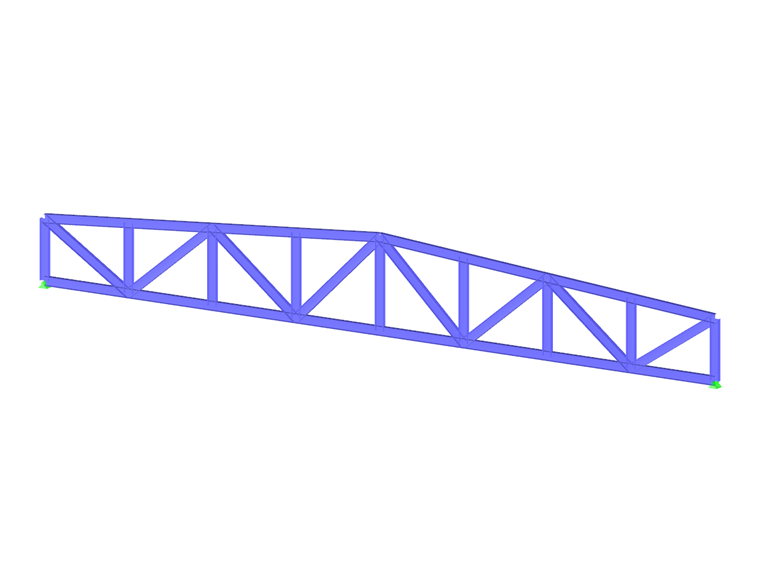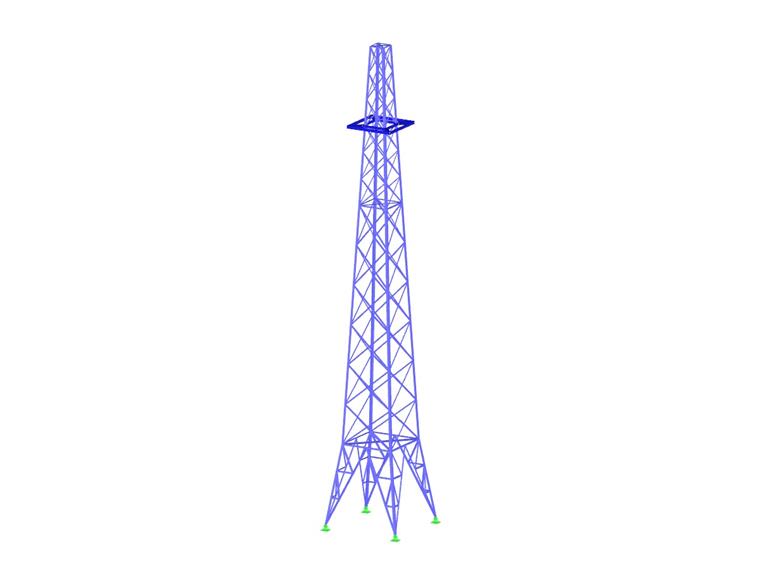A truss is a member structure of which the members are subjected only to axial forces.
Features
An ideal truss is made of members with the nodal connections consisting exclusively of moment hinges; that is, no bending moments are transferred to each other.
Furthermore, the ideal truss is only subjected to concentrated loads on external nodes, so neither shear forces nor bending moments arise from external loads. If this is ensured, only axial forces appear as internal forces.
In reality, there are also bending moments and shear forces in members due to their self-weight, of course.
Application
When designing a truss, it is important to ensure that there is no external or internal displacement. A triangle made of truss members is considered statically ideal because it is statically and kinematically determined; that is, stable.
A truss girder is one example of using a truss in practice. Truss girders have the advantage of bridging large spans with relatively little material utilization, such as in the shell structures of logistics halls, or in larger dimensions, such as a railroad bridge.
Trusses are characterized by the members on the top and bottom (the upper and bottom chords), as well as by the connecting vertical and diagonal members, posts, and diagonals. With a truss as a single-span girder with loading from above, the bending moment is absorbed by compression in the top chord and by tension in the bottom chord.
The greater the distance between the upper and bottom chords, the greater the lever arm of this moment and the smaller the compressive and tensile forces in the top and bottom chords.
Another example that is often used in practice is a lattice tower or the Eiffel Tower in Paris. Even with these three-dimensional frame structures, the focus is on the advantage of saving material as well as planning and building effeciently.
Trusses in Dlubal Software
In RFEM and RSTAB, Dlubal Software provides you with the opportunity to model and calculate structures such as trusses quickly and intuitively. Both main programs provide the possibility to model common truss shapes particularly quickly by using the model generator.

.png?mw=760&hash=9a09c2d4cdd7e77cd4cbffed44c9cf144c1fd601)
